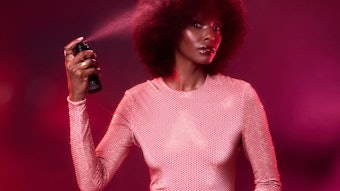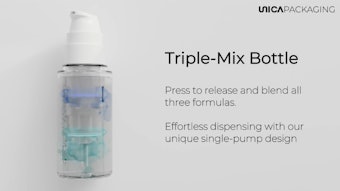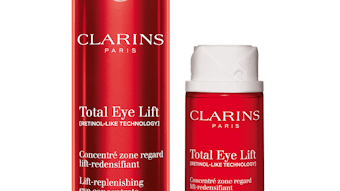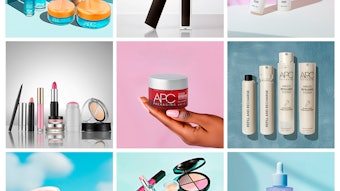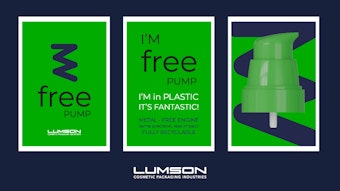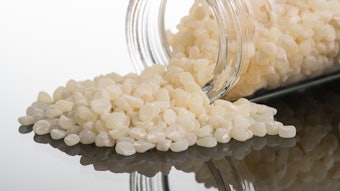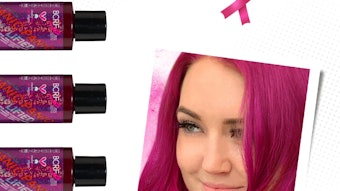- As a way to garner attention and woo consumers, more beauty brands are looking to offer accessories such as brushes and cosmetic bags as part of their lines.
- Many brands don’t have a lot of expertise in developing accessories, so partnering with a packaging supplier, designer and/or consultant is often advisable.
- By thinking more creatively about how a consumer will use products and working with partners, brands can find opportunities for practical, successful new additions or to fill a market gap.
Today, even the most well-known beauty brands are feeling pressure in this growing, competitive industry that now includes everyone from small organizations to major fashion houses. Beauty brands are looking anywhere for an edge to stand out, and are constantly changing their product lines as they work to incorporate each season’s style trends and the latest innovations to maintain consumer loyalty.
One way to do this is by consistently expanding product lines to become a “one-stop beauty shop” to meet consumers’ numerous beauty needs. For many, this means focusing new or increased attention on the applicator, brush and bag market, which opens new innovation opportunities for brands to help keep their image fresh.
To establish or grow their accessory collections, beauty brands often partner with packaging suppliers, designers and accessory manufacturers that have the expertise in this area to help them creatively develop these lines. To do this, brands must build cohesive and strong partnerships with behind-the-scenes partners who truly understand and support their goals. Otherwise, these collaboratively developed products, although new to market, may compromise a brand’s identity and reputation, jeopardizing customer relationships.
Collaboration Leads to Innovation
In order to successfully expand packaging and accessory collections, brands must be cognizant of today’s changing consumer needs. During the last decade, consumers have become more complex, with a variety of interests, influences and activities driving their choices. They are traveling regularly, constantly multitasking, and are more conscious and concerned about the health effects of their beauty rituals. Although these consumers desire ease, simplicity and compactness, they do not want to sacrifice style in the process.
How do these new behaviors influence product design? This is where the expertise of a partner may first come into play. While a beauty brand may create the perfect foundation or under eye cream to make a consumer appear refreshed after a long day, it may not be as well-versed in creating an applicator or a bag that also reflects the consumer’s on-the-go lifestyle. Thus, many beauty brands rely on collaborative partnerships to provide this added know-how.
The first step is establishing a team environment where designers, suppliers and the brand are all involved at the beginning of the development process. By designating or creating a space that fosters innovation, design and collaboration, brands and their partners can build upon an idea and share trend reports and resources with each other to maximize the possibilities. Most importantly during this stage, the brand and its partners must work together to determine how and where they can successfully expand, whether that is by supporting a new or existing product, filling a market gap or reimagining an old favorite.
Support a new or existing product: A true value add of applicators, brushes and bags is how they complement products as a natural extension and enhancement of a brand’s current products. For example, many beauty brands have allocated research and development resources so they can offer skin care products to reach one of the most influential demographics—the health-conscious consumer. These consumers are more knowledgeable about the effects of their beauty regimens and want care products and makeup formulas that actually improve their skin. This often means adding an SPF or a corrective ingredient, or even reducing the number of chemicals and dyes.
If tools are needed to apply these products, they also must support the health-conscious end goal. For instance, Anisa International recently introduced its Treatment Collection with silicone brushes designed specifically for skin care products and developed so consumers are not contaminating skin care formulas with bacteria, dirt or oil during application. Each brush in the collection is paired to support a skin care objective—cleanse, mask, exfoliate and protect—and the brush’s fibers help improve pick up and create an even distribution of product. They also are easily cleaned. In this regard, the brand’s formula and the tool are perfectly aligned in purpose, and that collaboration ensures products have real strength and staying power.
All in all, by thinking more creatively about how a consumer will use products and working with partners, brands can find opportunities for practical, successful new additions. Fill a market gap: Sometimes a broader trend opens the door for brands to expand their accessory, applicator and bag collections. One such example is the growing interest in nail art and the high-fashion nature of today’s nail looks. Nail style is an increasingly important part of consumers’ beauty regimen, and the relatively recent evolution of this trend also means there are more gaps to be filled, less product oversaturation and a wealth of opportunities for brands to explore.
For example, many brands offer consumers additional brushes for makeup application instead of just the one packaged within the product. The variety of tools helps consumers experiment and engage with products, and why should nail care products be any different? The brush within the polish is just the first step, and, similar to product pairings in makeup, brands should work directly with partners who are creating trendsetting tools to apply these products and package them in the best way. Whether that means combining nail files, clippers and other applicators together in a unique bag or creating new brushes to facilitate elaborate designs, the nail product category is a prime place for collaborative creation that will lead to must-have innovative products.
Most importantly, all of these tools improve the product’s accessibility and encourage more consumers to try out this trend.
Reimagine an old favorite: Sometimes in group brainstorming and design sessions, partners demonstrate to the brand the value in revisiting an accessory it currently offers but has yet been utilized to its potential. Historically, beauty brands have paired bags and brushes together, but these accessories have not always been the most innovative. Today, these combinations are evolving and becoming smarter and more unique. In working directly with a partner that created the brushes, brands can identify new ways to pair these tools. One way is by utilizing the partner and brand’s combined expertise in makeup trends and application to create a bag featuring brush combinations meant to achieve a certain look. Some companies are even utilizing the bag’s storage capabilities to feature educational material that helps consumers take advantage of the tools.
While always a staple, cosmetic bags also have become more of a statement piece lately. With a design partner who also provides direct manufacturing, brands can incorporate trending patterns, fabrics, colors and clasps that are directly influenced by the fashion industry at a more accessible price point.
No longer an afterthought, today’s cosmetic bags are stylish, functional, and can be repurposed as clutches and extensions of the consumer’s wardrobe.
Continuing the Collaboration
While the initial development stage affords beauty brands and their partners the chance to innovate, true fluidity in product expansion is achieved by maintaining this relationship from conception to execution. When working with a partner in the design and manufacturing of a product, brands are less likely to see lapses between these two development stages. In addition, a partner that is experienced in manufacturing can help a brand utilize materials that are cost-efficient without sacrificing the quality or intent of the design.
In the future, the old adage “two heads are better than one” also may mean that brands and their partners work together even in product distribution and marketing. For instance, these partners could use their own resources and channels to promote brands’ products or even contribute to their sales kits.
Formula type, brush shape, fiber material, color choice—every tool and product in consumers’ daily beauty routines contains a multitude of brand and vendor ideas and decisions. With these numerous choices and options, it is nearly impossible for a brand to isolate itself and be its own expert in every facet.
While these partnerships are valuable and essential, they must be built first and foremost on trust and mutual respect of each other’s strengths. With additional expertise and resources at the table—along with a healthy, collaborative team dynamic—brands will ultimately be better able to avoid stagnation, differentiate themselves and build the consumer loyalty that separates the good from the great.
Anisa Telwar Kaicker is the president and founder of Anisa International, a global design and manufacturing firm of private label cosmetic brushes, bags and accessories for clients including Sephora, Estée Lauder, Smashbox and more. Headquartered in Atlanta, the company operates its manufacturing plant in Tianjin, China; its design studio in New York; and sales offices across the U.S., the U.K. and China.
